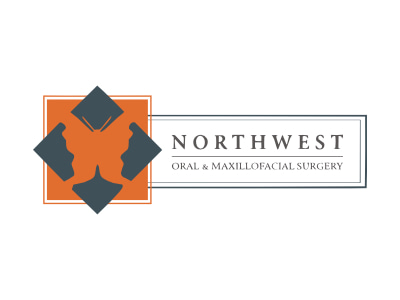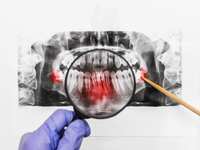Surgical Removal of Palatal Maxillary Exostoses

If you have been diagnosed with palatal maxillary exostosis or are experiencing symptoms that may indicate its presence, understanding the condition and treatment options can help you make informed decisions about your oral health.
Exostoses (the plural of exostosis) are benign bone tumors, a common type of which, bone spurs, can often be found near joints in the feet, hip region, or even in the ear canal (called surfer’s ear).
“Exostoses are benign bone tumors that form on top of your existing bone tissue. In other words, they’re bumps of bone that grow out of one of your bones. They’re not cancerous. This means they’re not a symptom of cancer, and they don’t cause it. An exostosis also won’t spread to other parts of your body (metastasize),” explains the Cleveland Clinic.
Exostoses, although less often, can be found in the jaw region.
“Exostosis is bony hamartomas, which are asymptomatic, benign, exophytic nodular outgrowths of dense cortical bone that are relatively avascular,” says an article in the National Library of Medicine.
“They are mainly of two types: Buccal and palatal exostosis. These benign growths affect both the jaws.”
Defining Some Terms to Better Understand Exostoses
Unless you went to med school, you probably want a better understanding of some of the terms associated with the surgical removal of palatal maxillary exostoses.
Here are some terms to know:
- Exostoses: Exostosis (the singular form of exostoses) are benign bony growths that develop on the surface of bones.
- Palatal vs. Buccal: Palatal refers to the roof of the mouth, while buccal refers to the cheek area. The roof of the mouth is called the palate.
- Maxillary vs. Mandibular: These two terms define which part of the jaw in question with maxillary referring to the upper jawbone, and mandibular referring to the lower jawbone.
- Hamartomas: A hamartoma is an abnormal growth that’s made up of the same tissue from which it grows. Exostosis is a type of hamartoma because it is bone growing out of bone.
- Benign: In medicine, benign refers to something not harmful in effect.
- Asymptomatic: A condition producing or showing no symptoms.
- Exophytic: Describes an abnormal growth that sticks out from the surface of a tissue.
- Avascular: Means tissues that do not contain blood vessels or lymphatic system.
What Causes Palatal Maxillary Exostoses?
The “Color Atlas of Oral and Maxillofacial Diseases” says that the specific cause of exostoses is uncertain, although they likely are related to both genetic factors and local stresses placed on the bone through occlusal function (grinding or biting surface of a tooth).
The Cleveland Clinic says that the most common causes of exostoses include:
- Injuries: Damage to a bone can make it regrow incorrectly and form an exostosis.
- Health Conditions: Some conditions like osteoarthritis and spinal stenosis cause extra wear and tear on your bones. This stress can lead to an exostosis growing near that irritation.
- Family History: You might be more likely to develop exostoses if your biological parents have them.
Colgate says that an article published in the Journal of International Oral Health cites the following causes for extra bone growth in the roof of the mouth including:
- Genetic factors
- Environmental factors
- Excessive chewing (masticatory hyperfunction)
- Teeth grinding (bruxism)
- Continued jawbone growth
“Growths usually appear in the late teens or early adulthood and tend to increase in size over time. It's common for people to have exostoses in their mouths for years before they even notice they are there,” says Colgate.
Symptoms of Exostoses and How a Diagnosis is Made
Since exostoses often present no symptoms, patients may not know they have them and they will be discovered by a dental professional during a routine check-up.
Colgate says that if your dental professional notices a protruding bone or thickened bone in your mouth, they will take a photo of it and measure the structure to help document any growth over time.
While most exostoses in the jaw region are asymptomatic, there are cases where indications of the condition are present, such as:
- Difficulty with denture fitting.
- Speech difficulties.
- Food impaction.
There was a 2002 study that speculated that occlusal stress and gingival infection could play a role in the formation of exostoses on the mandible and maxilla.
“Exostoses are usually asymptomatic, although trauma to the thin overlying mucosa sometimes can result in superficial ulceration. No treatment is required for most exostoses,” says the Color Atlas of Oral and Maxillofacial Diseases.
When Surgical Removal is Required for Palatal Exostoses
Surgical removal of palatal maxillary exostosis is relatively common, especially when the condition causes significant symptoms or interferes with oral function.
Some common situations in which surgery is recommended or considered include:
- Interference with Denture Fitting: Exostoses may hinder the proper fitting and stability of dentures, causing discomfort and difficulty in speaking and eating.
- Chronic Infections: If the exostosis leads to recurrent infections or inflammation in the surrounding tissues, surgical removal may be necessary to alleviate the problem.
- Speech Difficulties: Large or irregularly shaped exostoses can affect speech patterns, and surgery may be considered to improve speech clarity.
- Cosmetic Concerns: In some cases, the presence of palatal maxillary exostosis may be aesthetically undesirable, and surgical removal can help enhance the appearance of the palate.
“No treatment is required for most exostoses. However, surgical removal can be performed if repeated ulceration and pain occur or if the location of the lesion interferes with the fabrication of a dental prosthesis,” says the Color Atlas of Oral and Maxillofacial Diseases.
Surgical Removal of Palatal Exostoses is Straightforward
The surgical removal of palatal maxillary exostoses is a straightforward procedure that can be carried out by an oral surgeon.
Steps for a surgical procedure might include:
- Pre-operative Assessment: Before surgery, your oral surgeon will conduct a thorough examination, including medical history review and possibly additional imaging.
- Anesthesia: The surgical procedure is typically performed under IV sedation with local anesthesia, ensuring you remain comfortable and pain-free during the operation.
- Surgical Technique: The surgeon will access the palatal maxillary exostosis through an incision and carefully remove the excess bony growth. The procedure aims to restore normal oral function and alleviate associated symptoms.
- Recovery and Post-operative Care: Following surgery, your oral surgeon will provide you with detailed instructions on post-operative care, including pain management, diet restrictions, and oral hygiene practices. Full recovery usually takes several weeks.
Palatal maxillary exostosis, although typically benign, can cause discomfort and affect oral function in some cases.
If you are experiencing symptoms or have been diagnosed with this condition, consult with the experienced oral surgeons at Northwest Oral & Maxillofacial Surgery who can guide you through the surgical removal process.

















